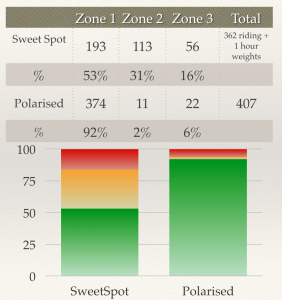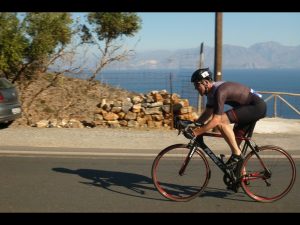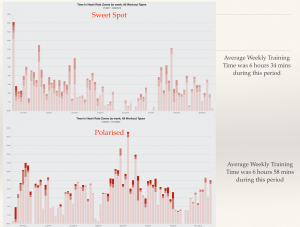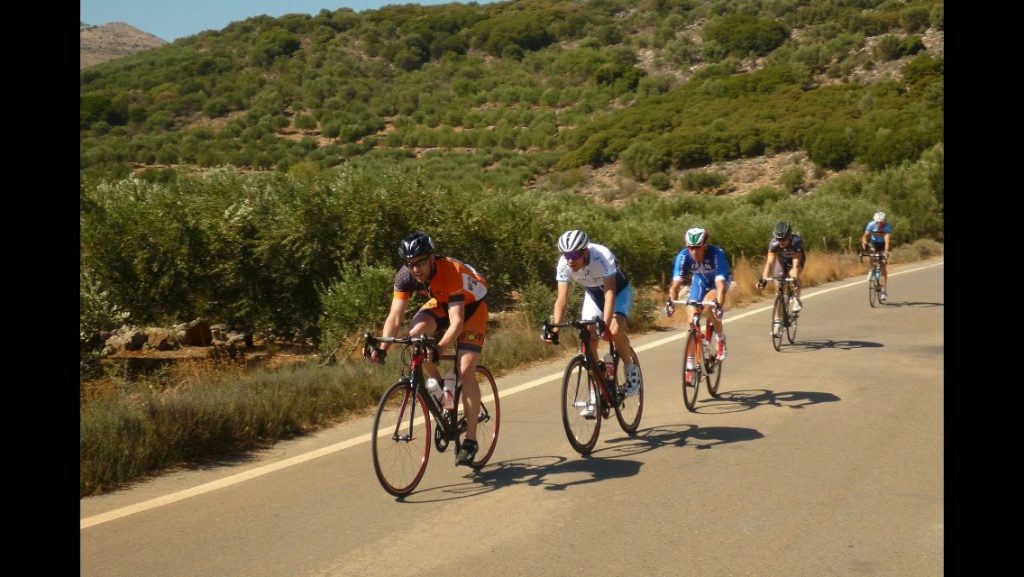The key to improving your endurance performance
There are so many things to look at in training. I find it all extremely interesting and spend a huge amount of time listening to podcasts, reading and attending seminars on training, physiology and anything I think will help my athletes.
When you listen to all the ideas, tips and tricks you have to remember, ‘how does this affect today’s training, this weeks training, this months training etc’.
As I’ve learned more and more, the one word that all the advice points back to is ‘patience’.
It began to crystalise as the root of almost all of the advice as I was on a lovely Z1 ride in the Jura Mountains.
It’s the most important thing, yet is almost absurdly simple you could miss it. I’ve read cycling magazines for years and even though occasionally there are articles that allude to this; it is massively overwhelmed by the ‘get fit in 4 weeks’ programmes and the ‘boost your FTP in less than 4 hours a week’ high-intensity training articles.
I do understand it; it’s not sexy to say you. need to be patient, you need to get on your bike regularly, keep intensity under control and make sure you occasionally go hard and occasionally have a day off.
There’s clearly a lot more to it in fairness, but all the high-intensity stuff is really not the key.
The Key to endurnace performance: Patience!
I also think there are many layers to patience. You need to be patient on a micro level, meso level and macro level.
Have patience in the ride you are on; what is its purpose? If it is an easy Z1 ride (3 Zone model), then use your gears, keep it easy and don’t go chasing that rider that just overtook you.
If it’s a hard ride with quality intervals, be patient and work through the intervals as prescribed…don’t go out all guns blazing and blow up before the end.
That brings me on to another area where patience is key; be kind to yourself when you make mistakes! If you did blow up before the end of your interval session, don’t beat yourself up. Learn from it and try and do better next time. If you keep making the same mistake all the time, that’s a problem. If you make mistakes and learn, you are getting better.
On a meso level, you need to be patient to let the sessions build. Be patient in the week, if it’s an easy ride, ride easy, don’t chase a Strava KOM that day or your planned hard session the next day will be of less quality and not create the desired adaptation.
Also, be patient on a macro level. Don’t take shortcuts to try and get fit quick…it doesn’t work in the long term. We’re in an aerobic sport, training the aerobic system is what gets you the gains. Being consistent over time, managing your intensity and building a powerful engine all comes back to being patient. So simple, but ultimately the key to endurance performance.
Given that we are close to the end of the summer season and many will be planning a bit of time off the bike before setting about their winter training. So first on the list of being patient Is giving yourself a suitable amount of time off the bike or at least off hard training.
Don’t get sucked into the rubbish about losing all your fitness and getting behind on your training!! It really is rubbish, have confidence and patience in your process, if you aren’t racing until next April…why would you want to be fit in November/December anyway?
I’ve heard some physiologists and coaches talk about how the body may not necessarily need a break if training is well designed. However, the mind definitely needs a break. It will be different for everyone, some will have a few weeks of no bike and no training. Some will choose to get a few easy rides, but. much. lower frequency, volume and intensity. Some. may choose a different activity to stay active, but not train as such. A great time to spend with family and give back if you’ve been away for a lot of racing.
It’s important you get this reset. The biggest you can make is train too hard now. The great shame of this is that it’s a mistake that can be made so easily. That’s mainly because your body can cope…at least for a while.
The tragedy is that you will cope for long enough that by the time you realise your mistake and start burning out the season will actually be in sight…but your motivation will be rapidly running out. I can speak to this from personal experience!
Be patient, focus on the appropriate intensities. Spend time with your family and friends. Spend time fixing any niggles you might have with some good off-bike training (More in for on that here).
It’s a good time to focus on things like getting a bike fit, which means you can make any changes needed and have plenty of time to adapt to them before you have to start pushing hard on the pedals again.
Here’s an example of a case study that involved a masters rider having the patience to control intensity, completely changing their riding over an offseason and getting the rewards in their results.
Case study
A Masters rider who used to train for cycling with a lot of Z2/3 riding (in a 3 Zone Model). A typical week of training consisted of 2-3 sweet spot rides on my turbo trainer, 1 threshold ride/race and 1 long ride.
This resulted in a pattern of regular colds, particularly after a ‘peak’. Nothing too bad, but it would always knock them back a couple of weeks.
Progress was good for a few years but in the 3rd and 4th seasons stagnation and burnout. Towards the end of this period, I started seeing this pattern of frequent illness and stagnation.
Changing to a polarised training approach in late 2018 delivered a more consistent winter and build into the 2019 season. You can see the difference in intensity in the graph on the right.
The biggest difference was a feeling of freshness almost all of the time and when the racing came so did the PB’s. FTP had been about 305 for 2 years and now it was 323.
Here’s a summary of the time trial PB’s:
- 19:57 for 10 miles (down from 20:56)
- 50:46 for 25 miles (down from 54:55)
- 1:49.45 for 50 miles (down from 1:56.42)
There were no episodes of illness, allowing training to be more consistent and more PB’s would surely have happened if there had been racing in 2020!





Stay Healthy
Meaning both not getting injured and not getting ill.
If your training is too hard or too frequently intense you will get little illnesses and injuries that break your consistency.
Keep your easy sessions easy, for most athletes, this means around 80-90% of your training is below 78% of your max heart rate.
Be Consistent
Once you are disciplined with your intensity, you will stay healthier and consistency will come.
Getting on your bike as much as you can, in balance with the rest of your busy life, will be the thing that impacts your fitness the most.
Sustainable rhythm
All this put together means that you can put together long stretches of sustained endurance training stimulus that creates greater adaptation and performance gains.
It’s important to remember to keep life in balance, fit the training in around everything else and don’t dig too deep into your energy or your partner or families ‘good will’. Find a balance.

